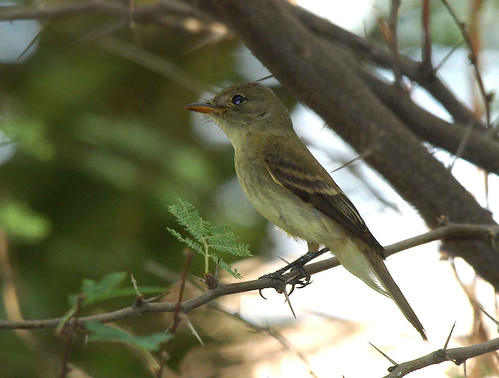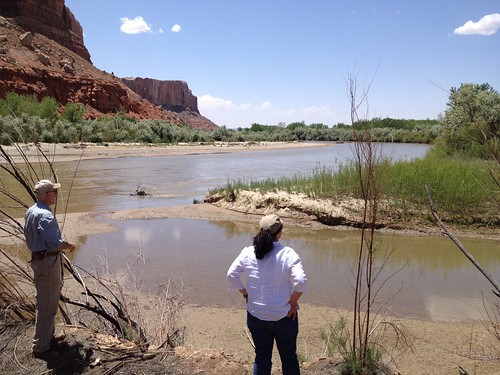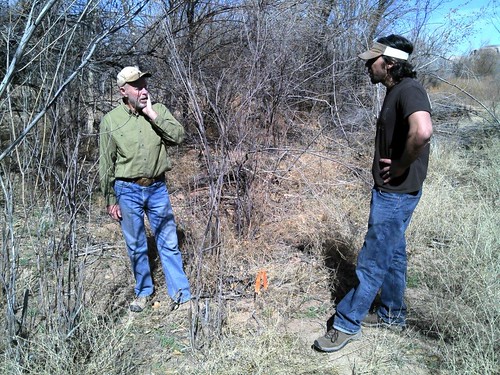
The Southwestern willow flycatcher is an endangered bird that lives in the riparian areas of the Southwest. U.S. Fish and Wildlife Service photo.
Jim Hook, owner of the Recapture Lodge and volunteer firefighter in Bluff, Utah, has been working for years to manage and restore the riparian habitat on his property along the San Juan River in southeast Utah.
Where the Cottonwood Creek and the San Juan River meet, Hook is working with USDA’s Natural Resources Conservation Service (NRCS) to establish healthy riparian habitat. His hard work over the years has begun to yield results as the invasive plants have begun to die and native plants are taking their place. An endangered bird species, the Southwestern willow flycatcher, is one of the species that will benefit from his restoration work.
The flycatcher prefers to nest in dense native trees and shrubs, but also nests in thickets dominated by tamarisk. Leaving dense tamarisk increases fire severity, frequency and size, which in the long term can degrade the habitat for flycatcher and many other species. An incremental removal of tamarisk and planning of native plants is more difficult, and more complex, but will yield the best short and long-term benefits for flycatcher.

Landowner Jim Hook (left) surveys beetle-killed tamarisk with NRCS Soil Conservationist Amber Johnson along the San Juan River near Bluff.
Over the years, Hook has welcomed projects from researchers, students, agencies, biologists and artists on his land and allows hiking access to individuals with authorization. Hook has worked with NRCS for several years to make conservation improvements to his land, and when the Working Lands for Wildlife partnership, or WLFW, was created in 2012, his history of stewardship made him a good candidate for the program.
WLFW assists landowners, like Hook, in restoring degraded riparian ecosystems, conserving existing healthy riparian systems and improving working lands near riparian areas. The program focuses on increasing and improving potential breeding habitat, to support Southwestern willow flycatcher recovery.
NRCS provided Hook with technical and financial assistance, including the development of a conservation plan, which entails controlling invasive Russian olive trees, removing beetle-killed tamarisk trees, creating a fuel break and planting additional acres with native species to supplement the existing habitat. He completed most of the work himself.
Hook is continuing his work to restore native habitat. Project partners, such as Utah Department of Forestry, Fire and State Lands and Utah Conservation Corps have also contributed to the success of the project by providing funds and technical expertise. Hook, NRCS and the partners will continue to expand the restoration effort and monitor the riparian habitat, and they hope to see a nesting flycatcher pair in the upcoming years.
Restoring habitat for the Southwestern willow flycatcher not only benefits the flycatcher but many other sensitive species, such as the yellow-billed cuckoo, northern leopard frog and Townsend’s big-eared bat. Eighty-four federally listed species, including the flycatcher, may benefit from conservation work in southwestern riparian ecosystems, including hundreds more not listed.
In late March, NRCS announced its plans to broaden the conservation opportunities available to producers, enabling more people to help wildlife while strengthening their agricultural operations.

Landowner Jim Hook (left) worked with NRCS, including NRCS State Biologist Casey Burns, to restore riparian habitat on his land.
No comments:
Post a Comment
Note: Only a member of this blog may post a comment.